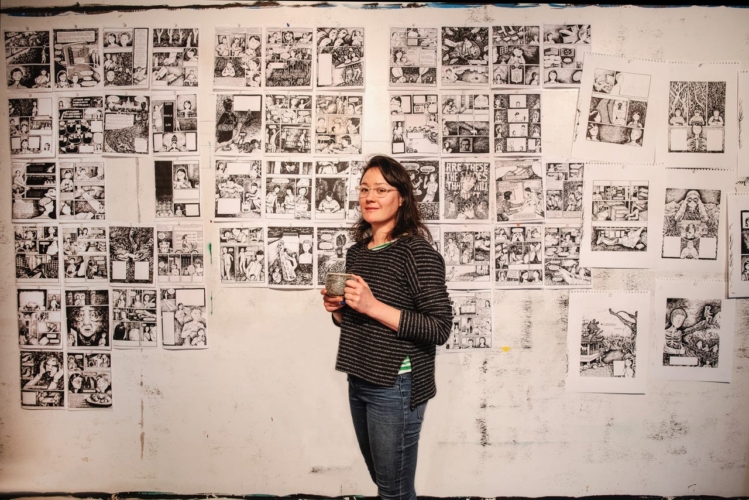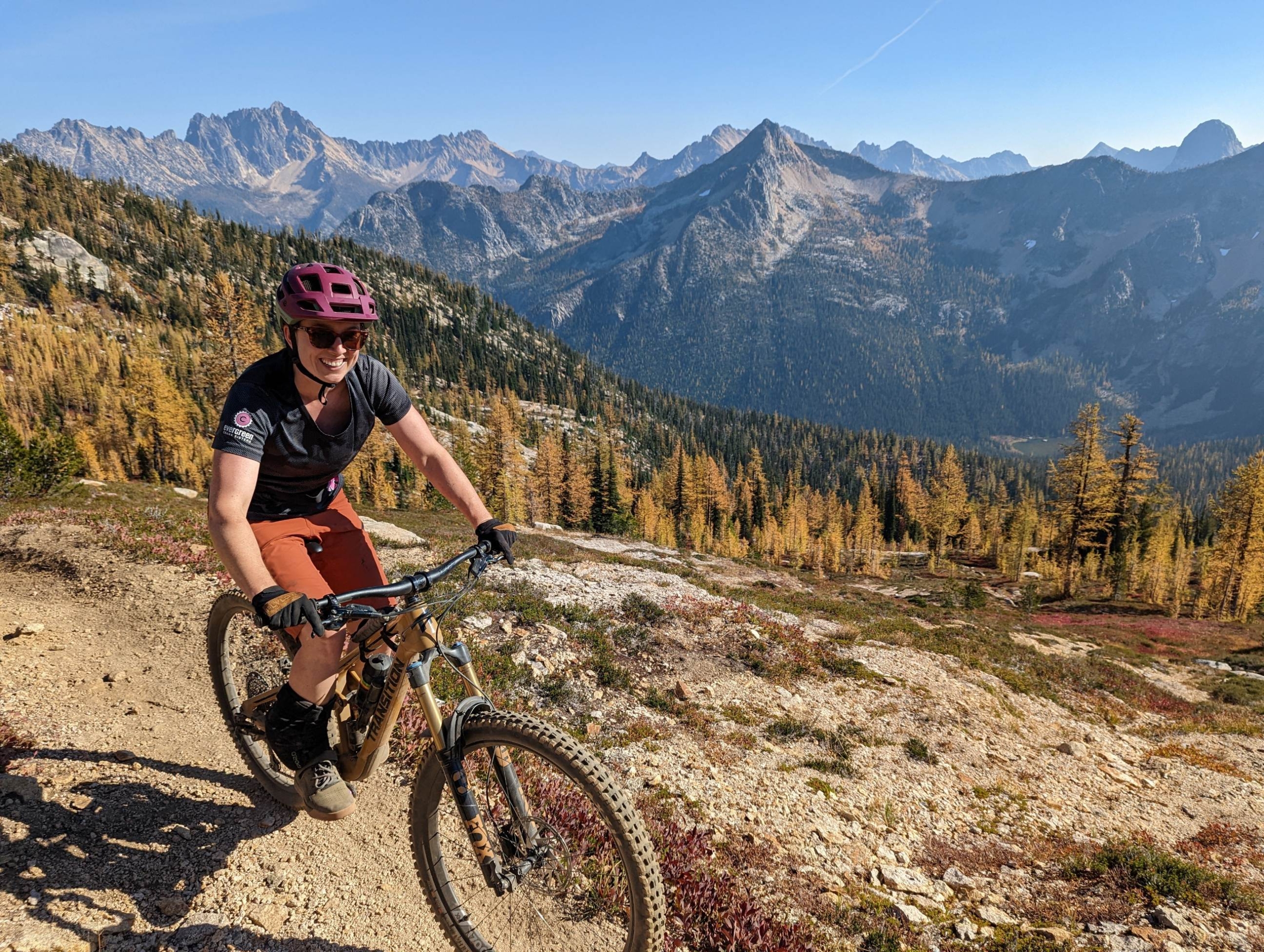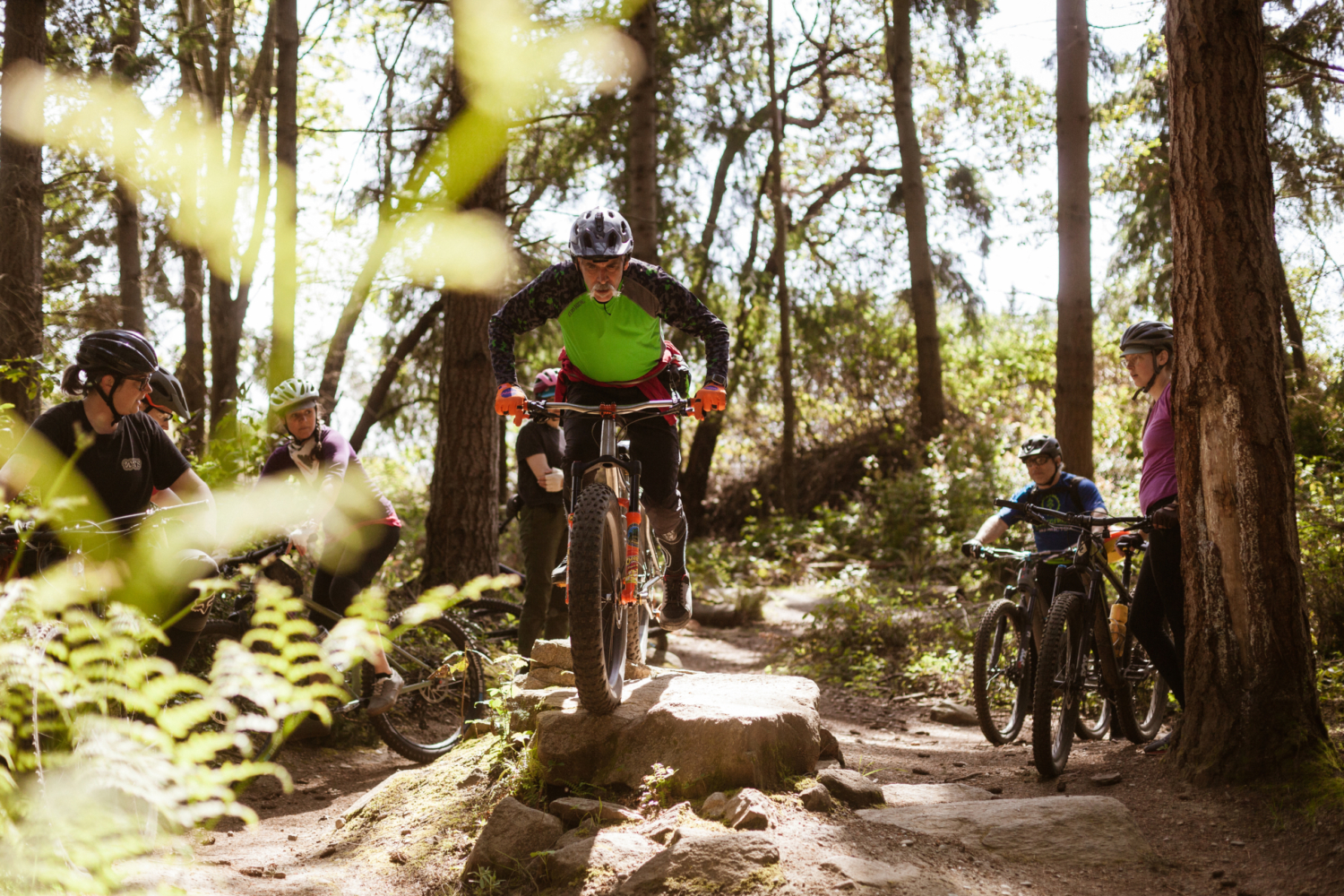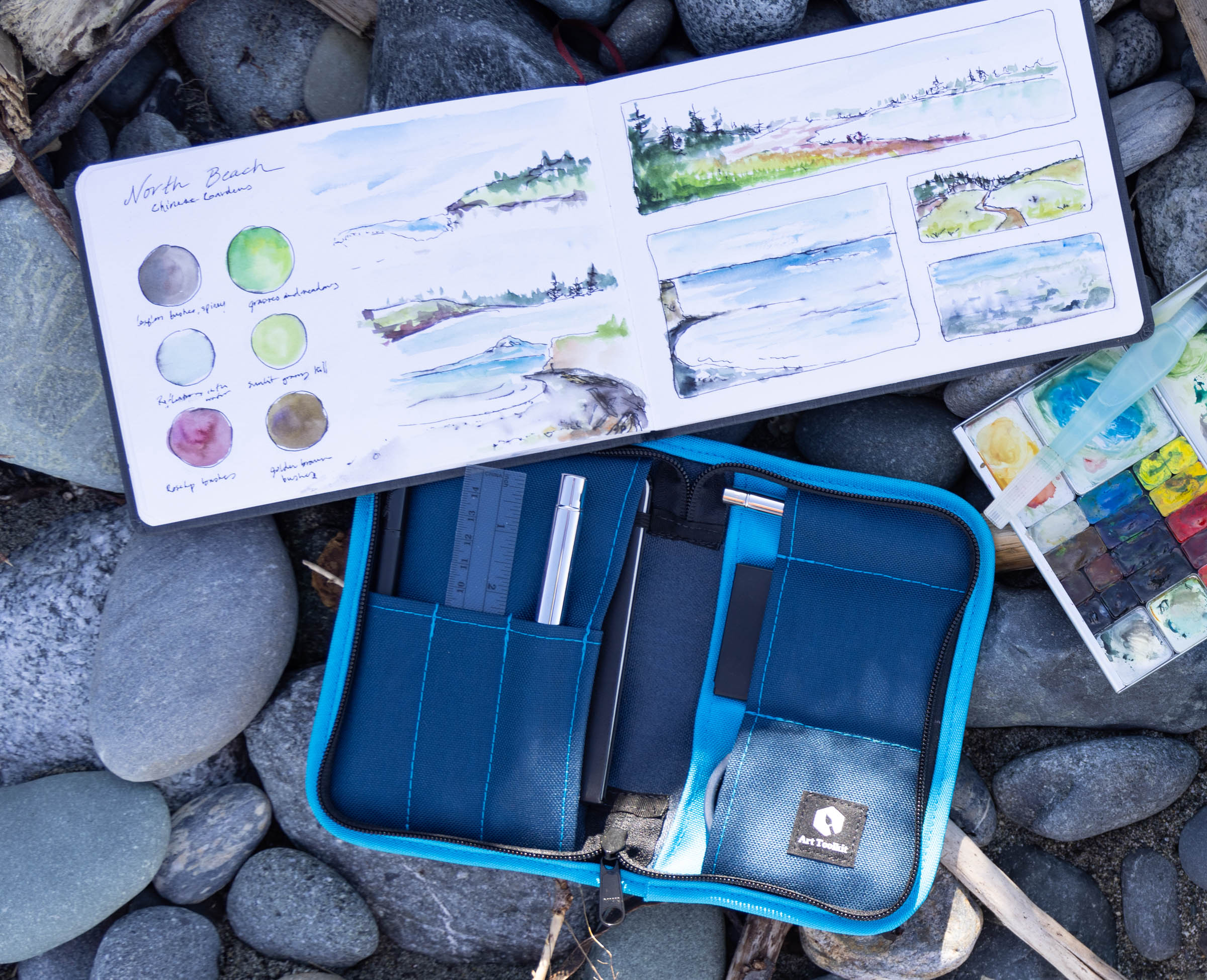We recently sat down with Tessa Hulls, artist/writer/adventurer and SACo guide to chat about her connection to the outdoors and newly released book, Feeding Ghosts: A Graphic Memoir.

Official Q&A Post
Can you share a bit about yourself?
I’m an artist/writer/adventurer who is equally likely to disappear into the backcountry or a research library. I’ve always been drawn to literal frontiers, particularly the arctic and antarctic, and love being in environments where the usual rules of human society don’t apply and you’re reminded of the ways in which you’re an animal in a vast landscape.
How does your work as an artist and writer intersect with being a cyclist and adventurer?
Exploring by bike became an integral part of how I move through the world back in 2011, when I rode solo from southern California to Maine in the hopes of gaining a deeper understanding of my own country. I spent four months on the road just talking to people about their lives and homes: what they cared about, what worried them, what questions guided the directions of their futures. I love talking to people I disagree with, and the experience of biking 5,000 miles across the US very much informed how I work as an artist, where I’m very interested in unveiling the hidden histories and decisions that have collectively shaped the world we inhabit. For me, bike travel is what gives me a renewed faith in humanity, and reminds me that human beings are wired to extend grace when we make room to receive it.
What is one of your favorite memories on a bike?
Too many to count! For me, it’s not about the bike: it’s about where the bike takes you. My preference is to travel for at least two months, going into each trip with no real plan or route in mind. One time when biking solo in Ghana in 2014, I was on a dirt road along the coast. I was riding at sunrise before it got too hot, and dozens of men were hauling a boat out of the sea with a massive rope that went across the road. They lifted the rope above their heads and created a small opening large enough to bike through. In that part of the country, instead of saying “Hello,” the greeting there was literal: “You are welcome.” We all smiled and waved at each other as I went by, and it was just one of those moments where all you can do is feel so fucking grateful for getting to witness the beauty of the world.
You’re currently on a book tour for your new graphic novel Feeding Ghosts! What was the best part of writing this novel? The most challenging?
I’ll start with the hardest part first: the kind of artist/writer I want to be involves being out in the world and interacting with it, throwing myself into unknown experiences and histories like a flint to see what sparks. Making Feeding Ghosts removed me from the world for the better part of a decade, and it honestly almost killed me to have to just sit alone in a room and turn inwards. For me, the roles of artist and explorer are fundamentally entwined, and both roles whither if practiced in isolation. The best part of writing was finishing the book and being able to return to the world. The instant I finished, I went on a five month momentum bender across Alaska and Iceland by way of ferry/boots/bikes/bush plane/packraft to just remember what it felt like to be free.
Your book dives into mental health and inherited trauma within three generations of a Chinese family. What advice do you have for someone working through similar themes or issues brought up in the novel?
If you don’t have to do it, for the love of god, don’t do it? Haha, ok I’ll say something more helpful. For me, I never felt like I had a choice in making this book. It’s the story I spent my entire life running from, and I knew the reason I’d been born as an artist and writer was to—eventually— complete my family’s broken story and bring peace to our ghosts. Timing was rough for me, in that I made the book during the darkest trenches of covid, and therefore didn’t have access to community and support structures. If you have to wade into the darkness, make sure you have rock solid systems in place that will keep you connected to the light. Laughter, shared meals, community—don’t let those things fall by the wayside, or you will drown under the weight of what you’re trying to channel.
Why did you choose a graphic novel over a written novel?
Graphic novels are powerful tools for explaining complex, layered ideas, and I knew that the only way I could tell such a dense– and emotionally heavy– story in an accessible way was by doing it as a graphic novel.
What is something you’re excited about right now?
For years now, I’ve known I need to fuse my wilderness and creative lives, and I’m starting to enact a career change. I want to become an embedded comics journalist working with science research teams who are doing remote field work around climate change and ecological resilience. I’d like to establish close, ongoing relationships with a handful of groups and write myself into their grant cycles from the beginning, so I can truly be a part of the team. My work for the last decade has been very solitary and involved in social activism, but I want to move further upstream and work directly and collaboratively with people who are trying to protect the land.
How can folks support you and your work?
Help me enact my career change! If you are or know of scientists or Indigenous groups who would want to find a way to bring a comics journalist on board for the long run—I would love to hear from you.




